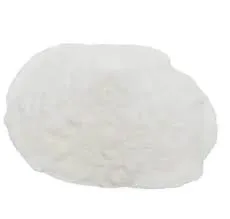
Nov . 28, 2024 05:11 Back to list
Understanding Hydroxypropyl Methyl Cellulose and Its Applications in Various Industries
What is Hydroxypropyl Methyl Cellulose?
Hydroxypropyl methyl cellulose (HPMC) is a versatile and widely used polymer that belongs to the cellulose ether family. It is a non-ionic, water-soluble compound derived from natural cellulose, which is predominantly sourced from plant fibers. HPMC possesses unique properties that make it extremely beneficial in various applications across multiple industries, including pharmaceuticals, food, cosmetics, and construction.
Chemical Structure and Properties
The molecular structure of HPMC consists of a cellulose backbone with hydroxypropyl and methyl groups attached. This modification enhances its solubility in water and its ability to form gels and films. HPMC is characterized by its non-toxicity, biocompatibility, and biodegradability, which make it a sought-after excipient in pharmaceutical formulations. The degree of substitution, which refers to the number of hydroxypropyl and methyl groups introduced on the cellulose unit, determines the properties and applications of HPMC.
A critical feature of HPMC is its ability to swell and form viscous solutions when dissolved in water. Depending on the molecular weight, HPMC can create various viscosities, which is essential for tailoring the formulation in different applications. Additionally, it exhibits excellent thermal stability and is resistant to enzymatic degradation, further broadening its usability.
Applications in Pharmaceuticals
In the pharmaceutical industry, HPMC is extensively employed as a binder, thickener, and film-forming agent. It plays a crucial role in tablet formulations, ensuring the uniform distribution of active ingredients while enhancing tablet stability and integrity. HPMC also acts as a controlled-release agent, allowing for the gradual release of drugs over time, which improves therapeutic efficacy and minimizes side effects.
Moreover, HPMC is utilized in the formulation of eye drops and other liquid medications due to its significant ability to maintain moisture and stabilize the solution. Its smooth texture and bioadhesive properties also enhance patient comfort, making it an excellent choice for ocular formulations.
Role in Food Industry
In the food industry, HPMC serves as a thickener, emulsifier, and stabilizer. It helps in improving the texture and mouthfeel of processed foods while extending shelf life by retaining moisture. HPMC is often found in gluten-free and low-fat products, providing the desired viscosity and structure that might otherwise be lost. It is commonly incorporated into sauces, dressings, baked goods, and dairy products.
what is hydroxypropyl methyl cellulose

The safety profile of HPMC, classified as GRAS (Generally Recognized as Safe) by the FDA, makes it an attractive additive for food manufacturers aiming for clean-label products. Its use allows for enhanced product performance while adhering to consumer demand for healthier and more natural options.
Cosmetic and Personal Care Products
The cosmetic industry also utilizes HPMC for its thickening, film-forming, and stabilizing properties. It can be found in lotions, creams, shampoos, and other personal care formulations, providing a smooth and pleasing texture while ensuring product efficacy. HPMC enhances product stability and prevents the separation of oil and water phases in emulsions, thus extending the shelf life of cosmetic products.
Furthermore, HPMC can serve as a moisturizing agent due to its ability to attract and retain water, making it a valuable addition to skincare formulations aimed at hydration.
Construction and Building Materials
HPMC is beneficial in construction materials, particularly in cement-based products. It improves the workability and adhesion of mortars, plasters, and grouts by enhancing water retention and extending open time. This property is crucial for applications requiring ease of application and time for adjustments before setting.
Additionally, HPMC acts as a reinforcement agent in wall paints and coatings, providing a smooth finish and reducing the likelihood of sagging.
Conclusion
Hydroxypropyl methyl cellulose is indeed a remarkable compound with a wide array of applications across various industries. Its unique physical and chemical properties, combined with its safety profile, make it an invaluable ingredient for pharmaceutical, food, cosmetic, and construction products. As industries continue to evolve and adapt to consumer needs, the versatility and utility of HPMC are likely to play a crucial role in future formulations and applications, cementing its importance in modern manufacturing processes.
-
Versatile Hpmc Uses in Different Industries
NewsJun.19,2025
-
Redispersible Powder's Role in Enhancing Durability of Construction Products
NewsJun.19,2025
-
Hydroxyethyl Cellulose Applications Driving Green Industrial Processes
NewsJun.19,2025
-
Exploring Different Redispersible Polymer Powder
NewsJun.19,2025
-
Choosing the Right Mortar Bonding Agent
NewsJun.19,2025
-
Applications and Significance of China Hpmc in Modern Industries
NewsJun.19,2025







